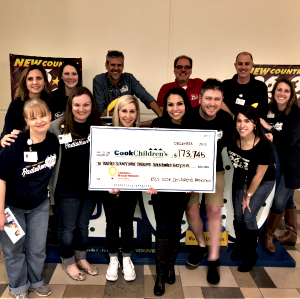
It’s been radio’s calling card forever. What makes radio different is the local connection. Radio can outperform every competitor with its local connection. We also hear that content is king, so does it really matter if you are local with bad content when you can pipe in a strong and successful syndicated show?
Side note of interet:
Pew Research recently released a poll on the topic of local news. The survey of 34,897 U.S. adults conducted Oct. 15-Nov. 8, 2018, showed that 41% of Americans who say they prefer getting their local news via TV and the 37% who prefer it online far outpace those who prefer a printed newspaper or the radio (13% and 8%, respectively).
We all know a lot of radio stations gave up on local news many years ago.
So how important is local overall to the success of your stations? We turned to four operators and asked them for their opinion.
Margaret Perkins is the President/CEO of First Natchez Radio Group. “Live and Local is imperative! All the other streaming options for music and entertainment do not connect to the local community. Particularly in smaller communities, where you know people at church, kids’ sports, school activities, festivals, local community interests, local political office, etc. The ability for us and the pride that comes with providing urgent and potentially life-saving information to listeners during hurricanes, ice storms, river flooding, etc. is incredibly important and gratifying. Having said that, it is difficult to provide live and local for all our stations. It is simply cost prohibitive. Our largest station is live, or voice tracked by the folks in the building – Monday-Friday 6A-7P and voice tracked on the weekends. On our other stations, we are programming 3 of our 5 stations from scratch and have several outside voice trackers that utilize our system to localize all the info on air, so they sound as if they are local and engaged in what matters most to our area.”
Adams Radio Group CEO Ron Stone tells Radio Ink live and local is extremely important. “It is the only thing that keeps us relevant. If we stray from live and local, if we fail to super serve the communities we are in, if we don’t continue to do all the things that have always made radio great, we take away every reason for listeners and clients to support us. That alone is what differentiates us. We cannot out-perform the companies coming after us…digital, satellite, etc…doing what they do. But when we serve our communities with perfection…they cannot beat us on a local level, which is where 90% of our revenue will always come from.”
In small towns, personalities are big deals, according to Legend Communications CEO Larry Patrick. “People flock to meet them, to get a tee-shirt or free CD’s and to be involved with our promotions. Live talk about what is happening in our communities is good for us. We are all-in for our communities. Business leaders recognize that and support us because we only want to build their businesses and grow our communities. We sponsor many sports teams and are involved in hopefully every community event.”
Bruce Goldsen is the co-owner of Jackson Radio Works in Jackson, MI. He tells Radio Ink being live and local is the number one priority. “Because it is the only critical difference between what we do and everyone else who claims the word “radio.” But simply being “live and local” without offering content that’s relevant to local audiences won’t insure continued success. We have never subscribed to the “lean and mean” approach. We have 20 employees, we have local news and super-serve our market with four different formats on six signals. We also voice-track at some point during the day, but it’s all done that day (time-shifted) with folks in-house. If we have a breaking news event, we’ve got folks there who can cover it.
Read the entire Pew study HERE. Warning: it’s extremely long.
We’ll have a lot more from our Independent Operators in the May 6 issue of Radio Ink. Subscribe HERE






While Robo-radio has become the norm, there is still the element that is being withheld from radio audiences: Real-time spontaneity.
The “companionship” illusion/delusion is not only lost, it is rendered impossible.
Further, the real-time exercise of a presenter rolling along on a stream-of-consciousness-wave was the most appealing element of a quality jock’s performance.
There was always the risk of the jock’s head exploding resulting in audiences also surfing the edge.
The best could pull it off. The worst were providing car wrecks – in real time.
Also very exciting.
Might as well develop the software that will record every sound generated by the human voice and then type in the required script. Human intonations that present emotions will be required.
Good luck with that.
Live is unnecessary…local IS necessary. Why? You can voice track correct time, temperature and weather information…do local information…you can do EVERYTHING a live station can do. It just takes understanding your playout system, recording all necessary times and temperatures…and the simple fact is: many stations won’t take the time to do it.
But “live” means real, live & talented jocks – every daypart except overnights – even on, (especially), the weekends. Most owners today won’t increase the payroll to hire them. This is, of course, their call, but the slow downward spiral will continue as long as radio stations continue to be jukeboxes interrupted by too many horrific commercials; often using the same voice in cosecutive ads. How does that set any business apart?
Ah, but you assume everyone on radio is 18 years old and making minimum wage or just above…not true. I’m 62, been in radio 45 years and counting. There are plenty of people like me working on the air. There is no “downward spiral” going on here. In fact, dollars spent on radio advertising is UP. Though, I agree there are too many units in a set, which makes me wonder if we shouldn’t go back to 3 sets, or even 4 with fewer units in them.
I believed the success or failure of radio in the future (starting today) will depend on this “live and local programming. When you’re live and local, you inevitably discover new revenue. Radio stations can all pay the same music – which is only a filler for “live and local”. Nothing wrong with syndicated radio – as long as it addresses the needs of the communities you’re licensed to serve. Local people with local stories will bring in listeners and revenue. Margaret, Ron, Larry, Bruce and Sanford nailed it. Great article!
We give each of our communities an hour 4-5pm weekdays for local Chamber, Govt and School District. They host, book their guests and get to offer info unchallenged by anti-social social media sites. They love the access, we love the content and the advertisers love to be identified as one of the pillars of our local community. WIN WIN WIN and WIN!